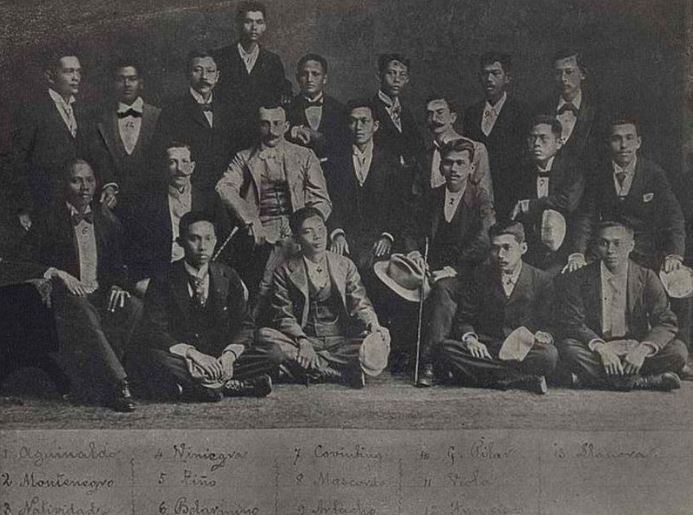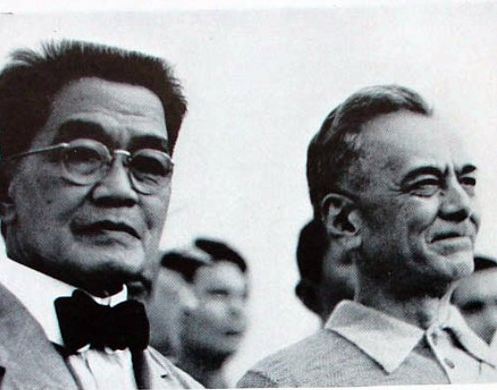Our history is a mix of good and bad happenings that occurred due to many events such as wars, discoveries, inventions, and other socio-political events. We always remember the work of those who were exceptional in their movements and were a cause of the major occurings. The same is the case for Emilio Aguinaldo who was a military leader that led Philippine forces against Spain in the Philippine revolution. Emilio Aguinaldo is known to be the best one that the Philippines ever got for a number of reasons.
Early Life
Emilio Aguinaldo was born on 22nd March 1869. He was the seventh child of the Aguinaldo family. His family was quite well off and belonged to a rich background with his father being the municipal governor in the Spanish Administration. Although he studied at one of the top institutes of the country named Colegio de San Juan de Letran, he was not able to finish his studies because of the Cholera outbreak in 1882.
Growing up and being affiliated with politics already, he became Cabeza de Barangay in 1895 when the Maura Law of reorganizing local governments was enforced. At only the age of 25, he took on the same role which his father had, the municipal governor. Right after becoming a governor, Emilio Aguinaldo took charge as a military leader and led several campaigns which became the route for him to become the President of the country.
The Fight Against Spain
To gain independence for the Philippines, Emilio Aguinaldo fought against Spain first and then with the United States as well. Right after 1895, he joined secret societies and turned into a rebel to fight against Spain. After joining the secret society named Freemasons, Aguinaldo met Andres Bonifacio who was an activist engaged in overthrowing the Spanish rule and getting back freedom for the Philippines.
He started his movement in 1895 and then started to prepared against Spain through many battles. In August 1896, he began his movement openly by provoking a series of coordinated attacks at Imua, a place where Spanish troops were stationed. To lead the Spanish forces out of the area, the forces of Aguinaldo laid a siege at Imus. To save the Spanish troops, about 100 troops were sent by Spanish commanders from Manila to Imus. Although this was a low number, there was a major skirmish in which Aguinaldo almost lost his own life but emerged successfully.
The fight did not end up right away as the Spanish relief column called for further reinforcements while Aguinaldo also prepared for another attack. The second war occurred at the Isabel II Bridge with 3000 men on the Spanish side. Concealed rebels started firing on Spanish forces which caused chaos and Spanish forces had to retreat. This was the first of many wins against Spain by Aguinaldo that led to the long road of Independence of the Philippines.
Read more about the Philippine army here – The Philippine Army.
The power of Emilio Aguinaldo was soon apparent to the Spanish forces and commanders. The enemies knew that if he continued, he would emerge successfully and Spain might lose control of the Philippines. Knowing these facts, Spanish forces planned on suppressing the rising power of Emilio Aguinaldo with more battles. To avenge the loss at Imus, the Spanish prepared armed forces comprising more than 9000 men. Suppressing the rebellion was important for Spanish forces because there was a rising awareness by Aguinaldo against freedom.
The battle took place at the towns of Binakayan and Dalahican both of which were successfully defended by Aguinaldo and Alvarez. This was a symbolic win that showed that Filipinos were emerging to be more powerful compared to the colonial power of Spain. Several other battles were fought between Spanish forces and Aguinaldo, the majority of which were won by Filipinos.
Also read – Brief Biography of Warren Harding.
Truce With Spain
As it was apparent that bringing down the power of Aguinaldo was not easy, Spain offered a Truce to him which he agreed. This truce said that Aguinaldo and the rebellions will surrender the arms and would be exiled to Hong Kong in exchange for amnesty, and liberal reforms. Although this truce was signed, it was not long-lasting as both sides compromised on the agreed terms and conditions. Therefore, Aguinaldo returned to the Philippines shortly in 1898 and started his rebellious campaigns again.
Emilio Aguinaldo – First President of Philippines
With significant efforts against Spain and constant rebellions, Emilio Aguinaldo became the first and youngest-ever President of the Philippines on January 21, 1899. In 1898, the country announced its independence. Aguinaldo forcibly set up a provisional dictatorship and decided to draft a new constitution. Spanish Colonial rule ended as all of the Spanish forces were captured while the rest had surrendered to the American forces. After long oppression and suffering by the Filipinos, the country finally attained freedom all because of the efforts of Emilion Aguinaldo.
Nonetheless, his presidency was short-lived because America was finding it difficult to give complete independence to the Philippines. As Americans had already captured Manila in 1898, things were critical in 1899. On February 4, 1899, a Filipino was killed by the American soldiers. This incident is considered significant because it sparked the Philippine-American war officially. American soldiers were being on top of Filipinos due to modern technology. At this moment, Aguinaldo himself led the forces in the Battle of Marilao to prevent American forces from crossing the area.
Read more about how the US Captured Manila in 1898 over here – US Infantry To Manila.
Emilio Aguinaldo Captured
On March 23, 1901, General Frederic Funston and some of his forces were led to Aguinaldo’s Camp and were given the weapons by Filipinos who were bribed by the US. As a result, Aguinaldo was captured. However, the hostility between America and the Philippines did not stay for long because within the next 7 days, Aguinaldo signed a truce with the United States as the oath of allegiance while giving sovereignty of the US over the Philippines.
With a peace agreement between the two, the United States decided to provide the Philippines with the independence that it was looking for. However, it took up to the year 1946 when the Philippines got its full sovereignty. Meanwhile, Aguinaldo retired to his private life and worked as a farmer. Till the year 1935, Aguinaldo stayed away from public life.
Election of 1935
In the year 1935, Aguinaldo made his appearance once again by participating in the 1935 presidential election against Manuel L. Quezon. Despite having good support, he had lost the election. In 1938, he was quoted to have Anti-Semitic beliefs as opposed to Quezon’s plan to provide shelter to the jews in Philipines. However, the two came upon an agreement in 1941 and the symbolic event of moving Flag Day to June 12 was initiated. This was also among the early signs of Philippine independence.
Other Achievements of Emilio Aguinaldo
Despite losing the election, Aguinaldo was an important personality politically which is why he was favored and awarded many times. In 1950, he was appointed as a member of the Philippine Council of State which was one of the most elite departments of the country. He served a full term over here. After retiring, Aguinaldo had plans to have the attention towards the veteran soldiers, particularly the ones who had supported him throughout the wars against Spain and America.
In 1953, he was made the Honorary Doctor of Laws by the University of Philippines. To honor Aguinaldo and his exceptional efforts towards the independence of the Philippines, the Independence Day celebrations were changed from July 4 to June 12 in the year 1962. Aguinaldo attended the year’s Independence Day observances. He was considered the ideal leader and true inspiration by many for his work for the Filipinos.
Death of Emilio Aguinaldo
In 1962, Aguinaldo was not in good health conditions. He was rushed to the Veterans Memorial Medical Center on the 5th October 1962. HE was diagnosed with coronary thrombosis, a condition in which there was a formation of blood clots in the blood vessels. Under the care of Dr. Blanco, Aguinaldo spent 469 days in the hospital. He died at the age of 94.
Prior to his death, Aguinaldo donated his lot and mansion to the government which now served as a shrine to remember the spirit of the Revolution of 1896. Before dying, Aguinaldo had also published a book named “Memoirs of the Revolution”.
Today, Aguinaldo is remembered in golden words in history. Filipinos have always given their tribute and respect to the man who strived hard and struggled a lot to gain independence for the whole nation. Without his extraordinary efforts, it would have not been possible for Filipinos to get rid of Spain and America.



